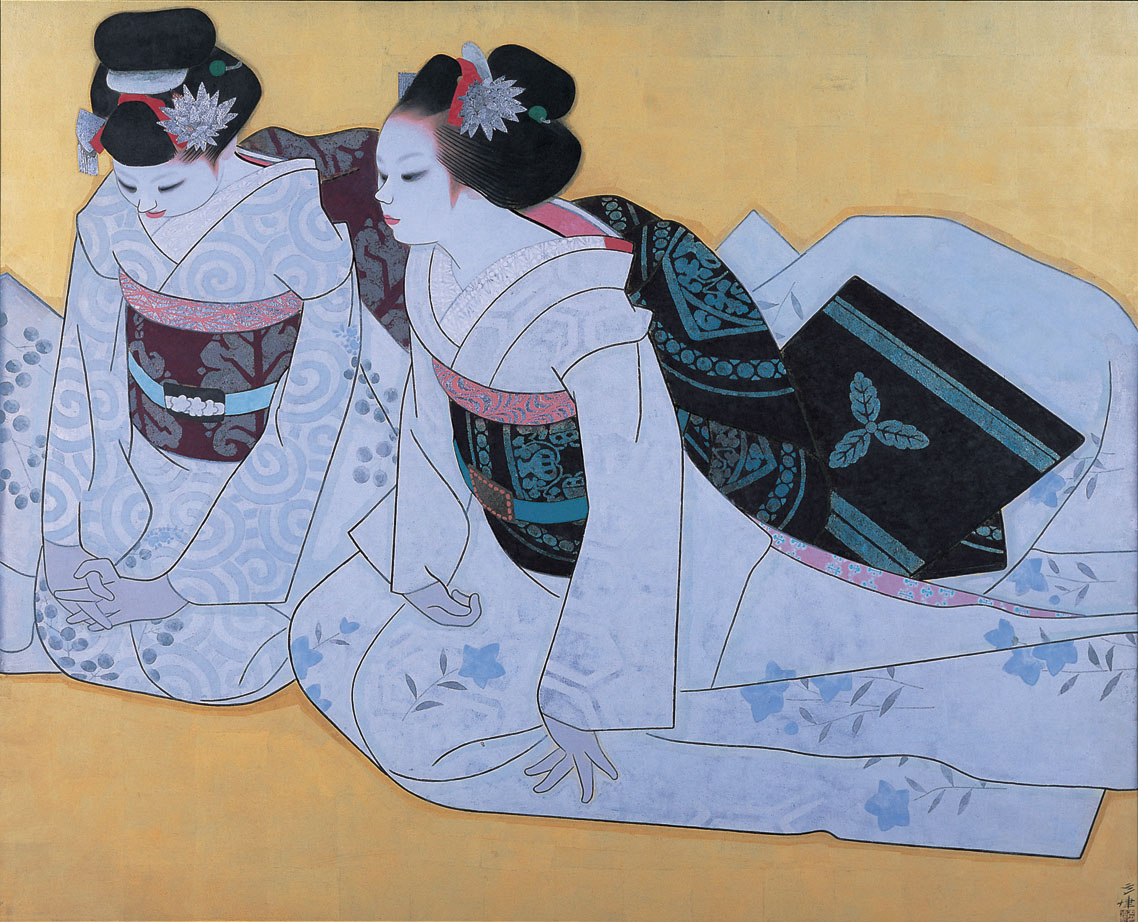"Painted by Women: Elegance of Showa Period" announces a thematic concern of the time, 1926-89, on which the art world was rigidified. Japan had embarked upon a 15-year period of war (1931-1945) and the individual expressive liberties that had informed the Taisho Era (1912-26), were being reined in.
It is difficult to say whether this was tantamount to artistic decline for many artists, but conservatism became the norm and the rupture that war occasioned defined their remaining careers.
Hisako Kajiwara (1896-1988), for example, grew up under Taisho democracy as the daughter of an affluent sake brewer in Kyoto. She trained in nihonga (Japanese style painting) with eminent teachers such as Soun Chigusa and Keigetsu Kikuchi, making her artistic debut in 1918 in Kyoto's Kokuga Society. A couple of years earlier, she had developed a radical alternative to the genre of bijinga (pictures of beautiful women). Rather than depicting the elegant doll-like figures characterizing the genre until then, Kajiwara represented women with dour faces, geisha who had lost their looks and women doing menial work.



